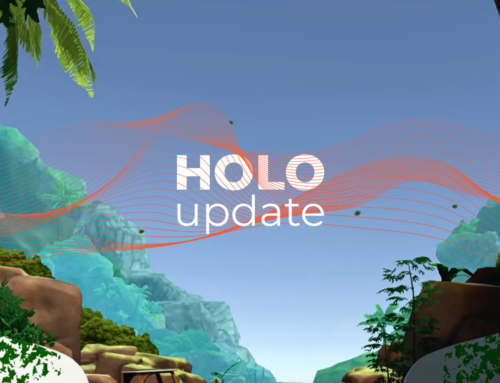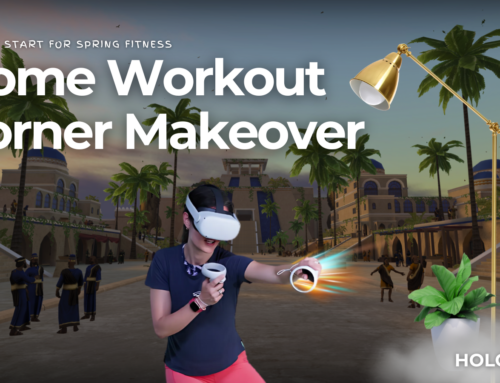It is the time of New Year’s resolutions and time and time again, we promise to get the dust off the exercise bikes, ellipticals or rowing machines and work on our fitness.
But we always find little excuses to store away this equipment.
However, maybe this time around we can count on Holodia to give us a helping hand and motivate us.
You might remember that Nik had already told you about it in 2016.
Pioneer and leader on the professional market for VR fitness equipment, Holodia has surprised us earlier this year by offering its well-established solutions on the B2C market.
You have a VR headset, wired or not, and you have a wheel-based fitness machine on which you place a simple sensor to be able to take advantage of Holofit.
If, however, your machine is FTMS (Fitness Machine Service protocol) compatible or other proprietary Bluetooth, HOLOFIT will work with the regular updates of the latest drivers.
If you do not have a VR headset, there is an option to get a Vive Focus already configured.
Having a Concept2 rower, I was able to test HOLOFIT with my Quest.
“Bof, VR Fitness is not for me”. These were my preconceptions before testing seriously.
I had already met the developers on several shows and noted the evolution of the product then reserved for professionals.
At the shows, you can’t really have an exhaustive experience. We quickly see the concept, we get an idea and we move on to the next.
At home, quietly, we have much more time to appreciate the work of the developers and to validate (or not) the product.
And this time, it’s validated 100%. The principle of gamification associated with sports performance pushes you to row like you have never before.
Motivation is there.
This is not a game as such, but it is very fun to be able to compete with a computer-generated player who was so much faster than us a couple of days ago.
Since the solution was developed for Fitness centers as well, there is a real performance monitoring of the evolution of the shape you’re in.
It’s possible to connect HOLOFIT to Google FIT and the Apple Healthkit for you to have a great idea of your general progress.
At the beginning, everything seems perfect.
Except that for the moment it is not that simple (for the Quest) and this is not Holodia’s fault. Let me explain.
As you know, there are several VR headsets on the market with more or less open systems.
It turns out that Oculus’ current policy for its store, more specifically the Quest store, is very draconian.
It is practically impossible for professional solutions to be present on the store for download.
Since Holofit was initially an application dedicated to B2B, Oculus categorically refused to put the Quest version on the store. Even if it is now available to consumers.
This is a well-known problem in other sectors as well, and all of them are forced to turn to alternative stores instead of the main one.
Therefore, for the Quest version, you will have to follow the installation manual to install HOLOFIT on your device. You will find good step-by-step instructions on your MyHolofit account.
On the other hand, the Vive Focus the application is easily downloadable on the Viveport platform.
Another delicate point that will be addressed later is the creation of accounts at Holodia. But you will realize that it’s pretty good, once the concept is understood.
First, if you are on a Quest, you must create an account to be able to download the application.
On Vive Focus as we have seen, the application is directly on the Viveport. You will have a free route in the “Tropical” environment to test it and all the installation and license explanations.
For the moment the website is all in English, but rest assured the application is multilingual.
Second, if you want to log into the program to monitor your performance, you will need to download the HOLOFIT smartphone app on the respective stores and create an account.
These accounts will then be linked so that you can have the results of your VR workout session on your smartphone wherever you go.
The advantage is that with a single VR headset and fitness device, you can have multiple user accounts, and therefore row or pedal as a family to then compare the progress.
On the Vive Focus, account changes are very easy by scanning a QR code with the headset’s camera. This option will be provided for the Quest when Oculus allows developers to access the front cameras. In the meantime, it’s username/ password.
Conclusion
This is a very professional solution which is slowly opening up to individuals.
The software is updated regularly. At the moment, multiplayer is not active on the wireless versions, but is being validated in the studio. It should be released very quickly.
No more excuses to watch the dust on your fitness equipment. We will soon find ourselves in multiplayer to switch it up a bit.
This article has been translated from French. You can see the original at etr.fr







